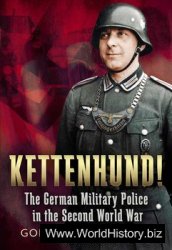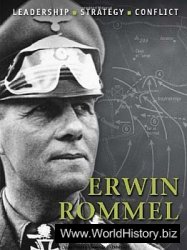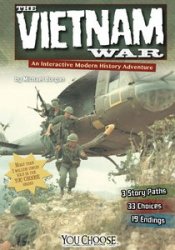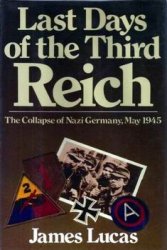Recent works on the origins of the Cold War use declassified materials from Soviet archives; the most important of these include John Lewis Gaddis, We Now Know: Rethinking Cold War History (Oxford: Clarendon, 1997) - but see also Melvyn Leffler, "The Cold War: What Do 'We Now Know'?," American Historical Review, 104, 2 (1999), 501-24; Vojtech Mastny, The Cold War and Soviet Insecurity: The Stalin Years (Oxford: Oxford University Press, 1996); and Vladislav Zubok and Konstantin Pleshakov, Inside the Kremlin’s Cold War: From Stalin to Khrushchev (Cambridge, MA: Harvard University Press, 1996). While Soviet materials on later years have been harder to come by, three recent works provide important accounts: William Taubman, Nikita Khrushchev: The Man and His Era (New York: Norton, 2003); Aleksandr Fursenko and Timothy Naftali, Khrushchev’s Cold War (New York: Norton, 2006); and Vladislav M. Zubok, The Failed Empire: The Soviet Union in the Cold War from Stalin to Gorbachev (Chapel Hill, NC: University of North Carolina Press, 2007). A key work illuminating American policies in the early Cold War is Melvyn P. Leffler, A Preponderance ofPower: National Security, the Truman Administration, and the Cold War (Stanford, CA: Stanford University Press, 1992); for a stronger focus on ideology in the eyes of a key American participant, see Anders Stephanson, Kennan and the Art of Foreign Policy (New York: Columbia University Press, 1989). Historians disagree over the extent to which "rollback" was a strategic objective vs. a rhetorical claim; see Scott Lucas, Freedom’s War: The American Crusade against the Soviet Union (New York: NYU Press, 1999) vs. Robert R. Bowie and Richard H. Immerman, Waging Peace: How Eisenhower Shaped an Enduring Cold War Strategy (Oxford: Oxford University Press, 1998).
On the main lines of American liberalism, see the classic Louis Hartz, The Liberal Tradition in America: An Interpretation of American Political Thought since the Revolution (New York: Harcourt Brace, 1955), leavened with the incisive essays in James Kloppenberg, The Virtues of Liberalism (Oxford: Oxford University Press, 1998). See also Dorothy Ross, "Liberalism,” in Jack P. Greene (ed.), Encyclopedia of American Political History, vol. II (New York: Charles Scribners' Sons, 1984). For discussion of a more diffuse American ideology, and its relation to foreign policy, see Michael H. Hunt, Ideology and US Foreign Policy (New Haven, CT: Yale University Press, 1987).
Key explications on the origins and nature of Marxist ideology are two accounts by Polish philosophers: Leszek Kolakowski, Main Currents of Marxism: Its Rise, Growth, and Dissolution, 3 vols. (Oxford: Clarendon, 1978), and Andrzej Walicki, Marxism and the Leap to the Kingdom of Freedom: The Rise and Fall of the Communist Utopia (Stanford, CA: Stanford University Press, 1995).
On the emergence of the ideological conflict during World War I, see Arno J. Mayer, Political Origins of the New Diplomacy, 1917-1918 (New Haven, CT: Yale University Press, 1959), and N. Gordon Levin, Jr., Woodrow Wilson and World Politics: America’s Response to War and Revolution (Oxford: Oxford University Press, 1968). On Wilson and his legacy, see also Frank Ninkovich, The Wilsonian Century: US Foreign Policy since 1900 (Chicago: University of Chicago Press, 1999).
For US-Soviet perceptions, see Christopher Lasch's insightful first book, The American Liberals and the Russian Revolution (New York: Columbia University Press, 1962). More exhaustive studies are Peter G. Filene, Americans and the Soviet Experiment, 1917-1933 (Cambridge, MA: Harvard University Press, 1967); Eduard Mark, "October or Thermidor? Interpretations of Stalinism and the Perception of Soviet Foreign Policy in the United States, 1917-1947,” American Historical Review, 94, 4 (October 1989), 937-62; and Norman Saul, Friends or Foes? The United States and Soviet Russia, 1921-1941 (Lawrence, KS: University Press of Kansas, 2006). See also the relevant chapters in David C. Engerman, Modernization from the Other Shore: American Intellectuals and the Romance of Economic Development (Cambridge, MA: Harvard University Press, 2003); and David S. Foglesong, The American Mission and the “Evil Empire”: The Crusade for a “Free Russia” since 1881 (Cambridge: Cambridge University Press, 2006). Richard Day offers useful commentary on Soviet views: The “Crisis” and the “Crash”: Soviet Studies of the West (1917-1939) (London: New Left Books, 1981); his Cold War Capitalism: The View from Moscow, 1945-1975 (Armonk, NY: M. E. Sharpe, 1995) does the same for the Cold War.
On US-Soviet relations before World War II, see, on the Soviet side, Jon Jacobson, When the Soviet Union Entered World Politics (Berkeley and Los Angeles, CA: University of California Press, 1994); V. A. Shishkin, Stanovlenie vneshnei politiki poslerevoliutsionnoi Rossii (1917-1930 gody) i kapitalisticheskii mir: ot revoliutsionnogo “zapadnichestva” k “natsional’no-bolshevizmu” [The Formation of the Foreign Policy of Post-Revolutionary Russia (1917-1930) and the Capitalist World: From Revolutionary "Westernism” to "National Bolshevism”] (St. Petersburg: Bulanin, 2002); and Teddy J. Uldricks, Diplomacy and Ideology: The Origins of Soviet Foreign Relations, 1917-1930 (London: Sage, 1979). On the American side, see Lloyd C. Gardner, Safe for Democracy: The Anglo-American Response to Revolution, 1917-1923 (Oxford: Oxford University Press, 1984); and Mary E. Glantz, FDR and the Soviet Union: The President’s Battles over Foreign Policy (Lawrence, KS: University Press of Kansas, 2005).
Some of the most interesting conceptualizations of the early Cold War rely on multiple national perspectives and often multiple archives. See, for instance, Marc Trachtenberg, A Constructed Peace: The Making of the European Settlement, 1945-1963 (Princeton, NJ: Princeton University Press, 1999); Odd Arne Westad, The Global Cold War: Third World Interventions and the Making of Our Times (Cambridge: Cambridge University Press, 2005); and William Curti Wohlforth, Elusive Balance: Power and Perceptions during the Cold War (Ithaca, NY: Cornell University Press, 1993).
Since the late 1990s, some historians and political scientists have sought to balance ideological and material factors in the Cold War. See, for instance, Nigel Gould-Davies, "Rethinking the Role of Ideology in International Politics during the Cold War," Journal of Cold War Studies, i (1999), 90-109; Jonathan Haslam, "The Cold War as History," Annual Review of Political Science, 6 (2003), 77-98; and Mark Kramer, "Ideology and the Cold War," Review of International Studies, 25, 4 (October 1999), 539-76. See also two broad overviews: David C. Engerman, "The Romance of Economic Development and New Histories of the Cold War," Diplomatic History, 28, i (January 2004), 23-54; and Odd Arne Westad, "The New International History of the Cold War: Three (Possible) Paradigms," Diplomatic History, 24, 4 (Fall 2000), 551-65.




 World History
World History









